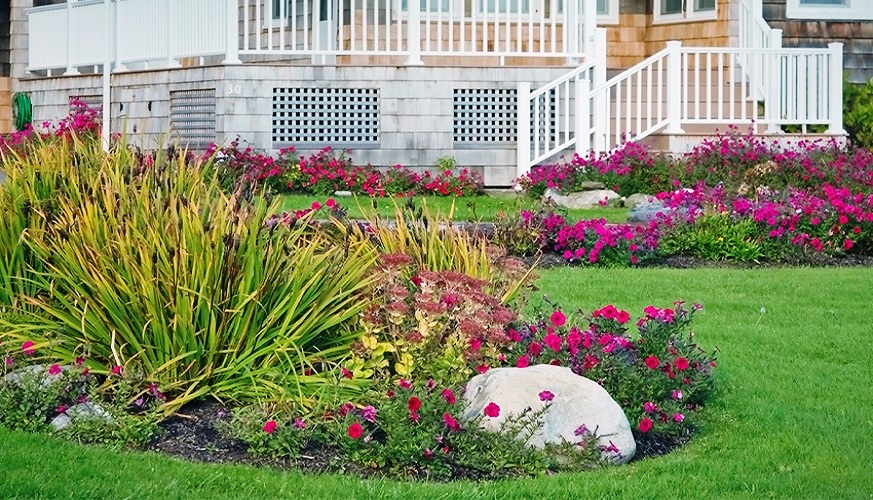Your Mindset When Creating A Landscaping Design

It is our belief that landscaping is not something that necessarily always follows logic. Whilst you want your landscaping to be practical to some extent, the actual design of it should not always be created following some kind of set in stone criteria. Instead, some of the best landscaping designs ever created came from someone’s imagination, and they were all the better for it.
Of course, there are going to be some limitations simply because you are bound to the limits of the area you are working with, and practicalities to consider in terms of physically building the landscape, but beyond that, it is your creative mind that should be used to produce the design, not some gardening equivalent of a knitting pattern.
A lot of what we mean relates to your mindset when it comes to designing your landscaping. If you want to do it ‘by the book’, then the risk is that you will have a design that does not inspire and is nothing more than a replication of someone else’s design, with the occasional tweak here and there.
We hope to spark your mindset into a place where your landscaping design works practically but is also allowed to develop so that the final result is something which you’ll enjoy for many years.
What Is Your ‘Why’?
If you are going to spend time, and money in designing and creating a landscape, you must have a reason to do so. For whose benefit is it for? You? Your family? Friends?
Answering these questions and getting to the core ‘Why?’ will help transform your design from a ‘thing’ to something which will be more akin to an experience for those who use it, including yourself.
Assess Your Land
While this is a more practical aspect of your landscaping design, it can also help you discover ideas that you may otherwise not think of. You need to determine the answers to questions such as what the soil type is, where are the water sources and what types of plants already grow there?
Once you have that information, you can now better understand the environment you are designing in, and thus know which features you can and cannot include in the design.
Imagine First, Apply Logic Second
We suggest that your approach to landscape design starts out with a view that anything is possible based on what you know so far. By all means, look for ideas and inspiration by looking at other landscape designs, and then let the ideas flood out, based on your ‘Why’ that we spoke about previously.
Do not be too judgmental at this point, wondering if they will work or not. Simply, get the ideas written or sketched, first. Then, once you have all the ideas out of your mind, it is time to go through and be more analytical in terms of what will work in terms of limits with regards to factors like size of the area, soil type, and your budget.
Liaise With Your Landscaping Team
During the previous part of the process, it may be useful if you liaise with the team who are going to be doing the work to create the landscape design you are currently planning. First, they may be able to answer any questions you have about a particular aspect of your design.
In addition, with their experience, they could help you change part of the design which you thought wasn’t possible in practical terms, and by making their suggested changes, you can now include.
